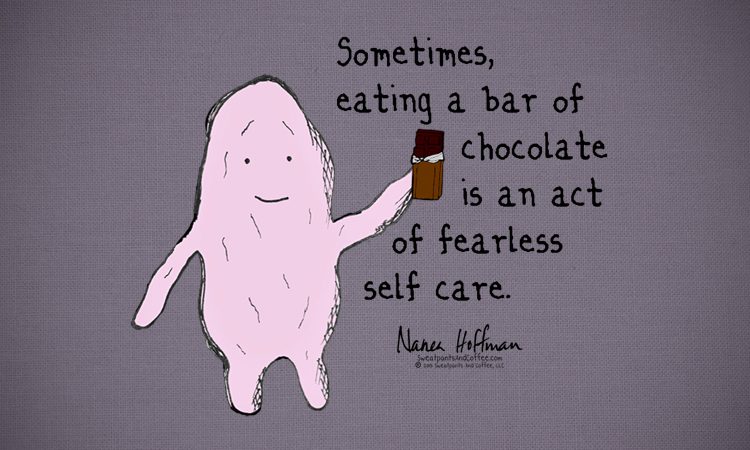There are times that I would like to act like a toddler. That freedom of expression, throwing myself on the floor and banging my fists and feet while crying and yelling. Full tantrum mode.
My fuse is much shorter now. Maybe it’s one of the effects of the pandemic. Maybe it’s hormones. Maybe it’s the desire to get all of this overwhelming emotion out. Whatever the reasons, I find myself overtaken by waves of emotion. Sometimes the reasons or emotional triggers are easy to identify; other times, they are not, and I’m left with emotions that are difficult to handle and process.
This is uncomfortable, and while I would like to cause a scene and act like a toddler, my conditioning holds me back. I’m an adult, expected to process and express emotion in responsible ways that don’t hurt people or destroy my relationships. This is my priority.
And as a childhood trauma survivor, I didn’t have a chance to learn how to handle emotions when I was younger, so I’m learning now. Here are helpful practices to put in place when you feel like a toddler.
First, Basic Self Care
Whenever I or my loved ones start to “toddler out,” I ask if basic self care needs have been met. First is sleep. Did I get enough sleep the night before? Do I need to lie down and chill out for a while? The second basic need is food. When did I last eat, and was protein involved? With that food, did I have any water to drink, and have I had enough water so far in the course of the day?
Next is exercise. Have I moved my body today? This can be a walk or more strenuous working out or some gentle stretching. The final basic need is prescription medication. Have I been taking my meds consistently over the last few days? Have I taken my meds today?
I have made an acronym out of these basic needs: SEEM. Sleep, Eat, Exercise, Meds. If things “SEEM” off and my emotions are overwhelming, maybe the dysregulation is a combination of missing self care practices.
If not, it’s time for next level care.
Step Out of The Spiral
We experience different emotions every 2.5 seconds, and it takes about 90 seconds to process an emotion. It’s easy to see how emotions can become backlogged, especially as they are not processed in a straight line. After all, we have things we need to get done in the course of a day besides processing emotions, so emotions get understandably pushed aside.
Emotions pile up and then – boom! – they demand to be processed. This can lead to what I call an “Emotion Storm” or “Emotion Spiral.” Like the house in The Wizard of Oz, we can feel picked up and tossed around, not knowing where we are going to land. This can lead to feeling like a toddler, wanting to tantrum in order to simply get some relief from all of these feelings that we don’t understand.
When this happens, many of us have been taught to escape. To cover up these emotions and feelings with food or alcohol or other substances and activities. This keeps the emotional backlog building, and pretty soon we feel completely buried.
Fortunately, we can mentally step away from this spiral. Pause. Take a breath. Take a step back. Step out of the storm of emotions and regain peace.
Ways to Self-Regulate
Once out of the emotion spiral, what do we do? It’s time to regulate that emotion by processing it. The mental health world is full of acronyms, so of course I made one for this process: BOG.
B is for Body. Our bodies are the conduit to our experiences. They experience everything first, so begin processing what’s happening through noting the physical sensations. Is your heart beating fast? Is your breathing shallow? Does it feel like there’s a weight on your chest?
O is for Observe. Instead of getting wrapped up in these sensations and panicking (this is what I tend to do if I’m not careful), observe the physical sensations and the meaning that our brains make from those sensations. If my heart is beating fast and my breath is fast and shallow, I might be angry. If it feels like there’s a weight on my chest, this emotion is likely in the “sad” family. Or maybe there’s a combination, as we can feel more than one thing at a time.
G is for Grounding. Instead of having a toddler tantrum, take these physical sensations and observations and ground yourself in the present moment. Take your shoes off and stand in the grass. Activate your senses and find five things that you see, hear, smell, and touch (taste is difficult sometimes). Practice square breathing (breathe in for four, hold for four, breathe out for four, hold for four).
Grounding activities take the intensity down and help regulate the nervous system, putting the thinking part of the brain back in charge. If you can, it’s helpful to express these emotions. This can be done through talking, writing, drawing, and moving, to name a few.
What if You Still Want to Toddler Out?
BOG should help and can be fairly quick. However, sometimes emotions hit so hard and fast (that’s what she said) that they completely overwhelm the thinking parts of the brain and we feel lost and panicky and tempted to tantrum.
In an emotional emergency, twirl. Seriously. Spin in a circle ten times, and then stop. This resets the vestibular system (the inner ear), restoring our physical and emotional balance and giving us enough of a pause to step out of the emotional storm and restoring a semblance of peace through processing…without toddlering out.





So Your Loved One Does Not Want the Vaccine
[…] easy to feel the physical sensations, assign meaning to them, and run with them. I call this “toddlering out”. We experience new emotions every 2.5 seconds, and it’s easy to see how they can overwhelm […]